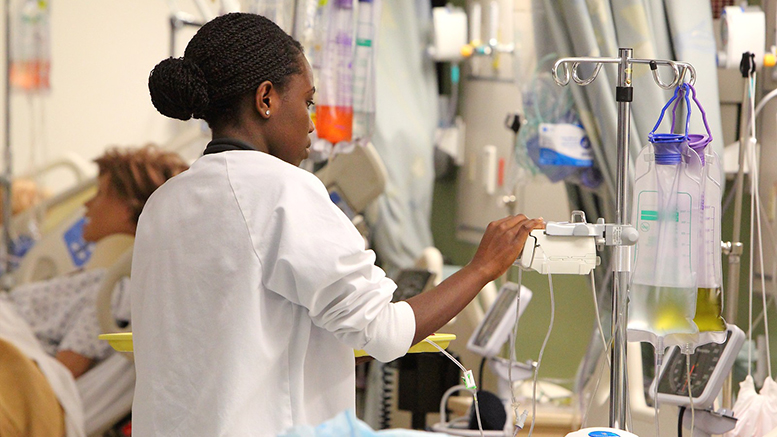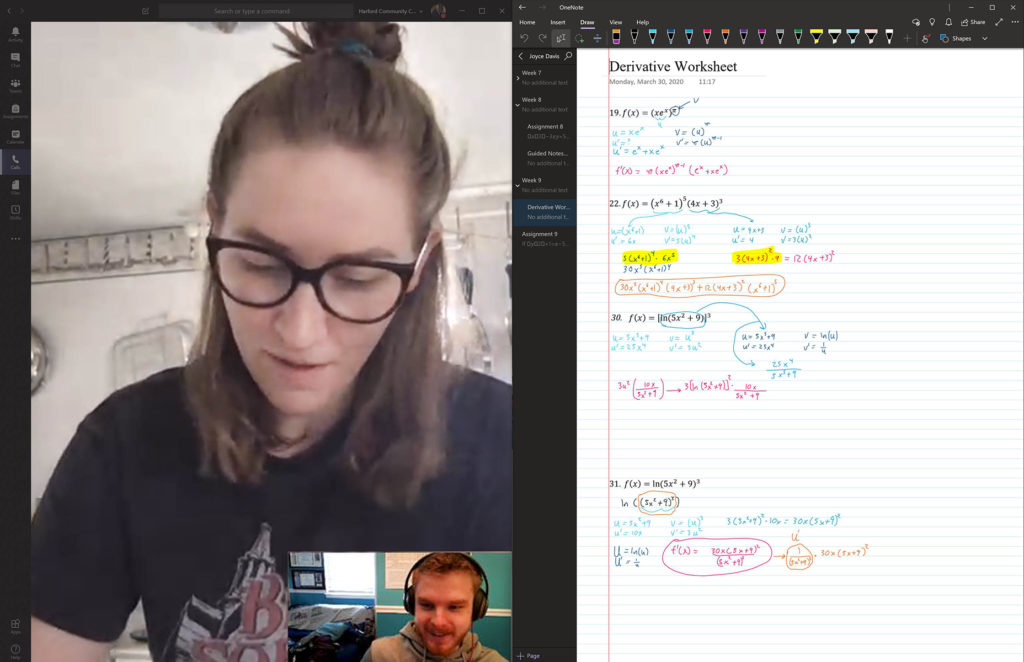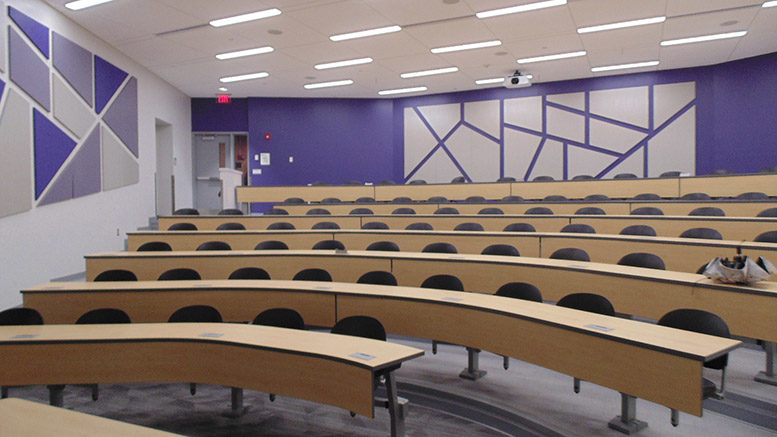After evaluating the health risks of bringing students back to campus while the COVID-19 pandemic rages on, HACC, Central Pennsylvania’s Community College, is keeping most classes virtual for the fall semester.
“The majority of students and faculty are very positive” about that decision, says President John “Ski” Sygielski. A small segment of both groups prefers opening fully, but “everybody understands how important this is and how we have to be very, very careful.”
While many community colleges are opting to offer both in-class and remote options this fall, a growing number of two-year colleges are making the same decision as HACC – to open their campus only for programs that require hands-on instruction – and retain virtual learning for everything else. Some of the other colleges that are staying mostly virtual include:
- San Diego Community College District
- SUNY Rockland Community College in New York
- Eastern Maine Community College
- Nash Community College in North Carolina
- Washtenaw Community College in Michigan
- Bucks County Community College in Pennsylvania
- Madison Area Technical College in Wisconsin
Task force recommendations
At HACC, a task force representing students, employees and administrators recommended having the hands-on components on campus and everything else online. The task force met once or twice a week for two months to develop a comprehensive plan that involves campus security, health and safety, screening protocols, personal protective equipment and academic offerings, says Sygielski, who serves on the American Association of Community Colleges board of directors.
For those functions that must be on campus, HACC is requiring faculty training to enforce personal protective equipment (PPE) requirements. The college also rearranged class spaces so student work stations are at least six feet apart, blocked access to common areas and marked sidewalks and hallways with one-way traffic indicators. Posters inform students and staff about hand washing and other health protocols.
To help students get through the fall semester online, HACC is providing tech support, including training videos on how to use Zoom and the college’s learning management system. It is also offering virtual activities to promote engagement and address possible feelings of isolation.
The task force will meet in early fall to make a recommendation about the spring semester, Sygielski says.
Declining enrollment
Fall enrollments at community colleges remain uncertain. Some colleges expect the pandemic to prompt an increase in students, while other colleges expect a dip.
At HACC, fall enrollment to date is down 23 percent, but Sygielski predicts more students will register before classes begin August 24. He attributes the decline to several factors:
- Students are waiting to see if four-year institutions will open their campuses.
- “School has taken a back seat” for students seeking a job, working more hours or dealing with family issues.
- Some students aren’t comfortable with online learning and might stay out for a semester.
- Other students are postponing college plans due to uncertainty over the virus.
“So many things are in play right now,” Sygielski says.
Plans are evolving
At Alamo Colleges District in Texas, “the Return to Campus Plan will constantly be updated as our knowledge and understanding of the COVID-19 virus continues to evolve,” says Chancellor Mike Flores.
For the fall, all courses will be virtual, except for career and technical courses and some arts and science courses that may require face-to-face learning. On-campus classes will be limited to 10 percent of capacity.
The college district requires everyone on campus to wear face coverings and follow social distancing protocols. It requires health screening and temperature checks for people entering a building.
Each college in the Alamo district will have a single one-stop student support office. Students will need an appointment to access that office. All on-campus events are banned, and all meetings are virtual for the fall.
The district is also developing an incident report process and response plan to address anyone on site who becomes ill with COVID-19.
Crisis mode
When the New York metropolitan region became the COVID epicenter in the U.S., “we were just crushed,” says Larry Hlavenska, spokesperson for Bergen Community College (BCC) in New Jersey
“In March it was survival mode,” he says.
As the spring semester rolled on, the college began to pivot from an emergency situation to sustainability.
“We got hit so hard initially; that definitely set the tone for the rollout of spring, summer and now fall,” Hlavenska says. “People understood from the beginning how devastating this could be.”
As BCC began looking at options for the fall, “it became apparent that an entirely in-person model was not going to be an option,” he says.
Some courses on campus
BCC began looking at how to build a schedule where it has classes online and also practice-based classes in person, Hlavenska says. College administrators made a list of courses that had to be at least partially in person – such as healthcare, culinary and STEM courses – and figured out where those classes could meet. For some programs, such as healthcare, face-to-face instruction is required for accreditation.
BCC made a decision on July 7 to keep the majority of classes (about 85 percent), suspend the athletic program, keep the two satellite locations closed for the fall and limit all in-person classes to the main campus.
For the classes that must be on campus, face coverings will be required, desks spaced out, hallways restricted to one-way traffic and thermal temperature scans will be required for people entering buildings.
A task force – with faculty, staff and students – met during the summer to identify student concerns with online learning. The group proposed ways to enhance the online learning experience for the fall so it more closely matches the in-class experience.
BCC is still working through what offices, if any, will be open in the fall. Student-facing services, such as tutoring, counseling and registration, are expected to stay online for the foreseeable future.
Summer enrollment was up about 4 percent to 5 percent, but “fall enrollment is really tough to gauge,” says Hlavenska, however, “Interest in healthcare is going through the roof.”
An early decision
While many community colleges are just now making a decision about the fall, Broward College in Florida announced plans in June to remain mostly virtual. Only a few hands-on courses – such as aviation, health science and transportation – will be on campus.
Marielena Desanctis, provost and senior vice president for academic affairs and student services, says three main factors shaped her college’s decision.
“Early in the pandemic, I heard an interview where the interviewee said, ‘I hope at the end of the pandemic I would be criticized for overreacting instead of underreacting,’” Desanctis recalls.

Remaining virtual could delay completion for some students and depress enrollment, but she worried that underreacting could result in more deaths.
Secondly, “It was very clear to me logistically that we were not going to have a broadly available vaccine in the near future,” Desanctis says. “I didn’t really contemplate that living with this virus was going to be different in August than it was in May, when we first had these conversations.”
Finally, Broward students and staff are experiencing a great deal of instability in their lives due to the pandemic, Desanctis says.
“It would be irresponsible to add to that by not making a decision early so they could plan accordingly,” she says.
The board of trustees did not need to take a formal vote on the plan, but it understood the rationale and agreed with the decision.
Some hands-on classes met on campus during the summer, but a paramedics course had to be suspended and moved online after there were several positive COVID-19 cases despite health precautions.
But there’s a fine line between making sure students can take the academic programs they need and keeping them safe, Desanctis says.
“You can’t have a dental hygiene program completely online,” she says.
Reaching out to students
The decision to remain virtual is having a big impact on enrollment, Desanctis says. Enrollment is down 3.9 percent for the summer and is expected to decrease 16 percent for fall. Broward’s budget, approved before the pandemic, projected a 4 percent decline for fall.
“We’re taking deep breaths” and hoping more students will register before the deadline, which is a month away, Desanctis says.
The biggest decline, about 30 percent, is among first-time college students. Desanctis believes many of them didn’t have a great experience with online learning during their senior year in high school. They “are not as motivated and enthusiastic about jumping into online learning for their first college experience,” she says.
Broward College has been reaching out on social media and working with the county school system to encourage high school graduates to enroll. The college is stressing the message that courses will be fully transferable.
“We’ve also been helping students understand the difference between online and remote learning,” Desanctis said.
Online learning is asynchronous, with no personal interaction. With remote learning, the instruction is live and students can ask questions in real-time.
“It mimics the face-to-face classroom as much as possible,” she says.
A mix of virtual and in-person classes
At Harford Community College (HCC) in Maryland, enrollment for the fall is down 16.8 percent, says spokesperson Nancy Dysard.
HCC is staying mostly online for the fall, at the recommendation of a reopening task force that included 10 members of the college community. The task force considered the governor’s recommendations for reopening businesses and other facilities, Dysard says, and evaluated course requirements to determine which classes had to be on campus.

About 50 classes – such as nursing, paramedic and anatomy labs, behind-the-wheel driver training and the review and assessment components for adult basic education – will be held in person in the fall. Harford’s test center and parts of the library are opening in mid-July. The bookstore is opening for drive-up service.
Dysard attributes the enrollment decline to several factors. She has heard from some students who are not comfortable with online classes. In other cases, students are waiting to see whether four-year institutions will reopen their campuses before making a decision to enroll at HCC.
Meanwhile, HCC is reaching out to university students home for the summer and to their parents “to let them know we’re doing everything we can to make this environment as safe as possible,” Dysard says.

